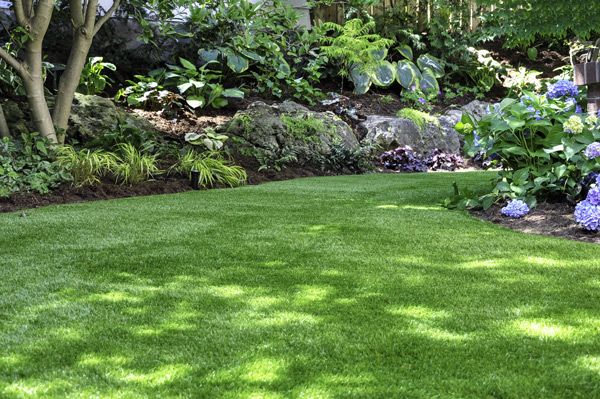How to properly winterize your turf
Posted on:Oct 20, 2020
 Before you can winterize your turf, you first have to know your turf. Finding out what type of grass you have will make all the difference in your winterizing process. Cool-season turf grows best in the fall, allowing for a more straightforward approach. Warm-season grass, on the other hand, will not respond well to traditional winterization techniques. Before we dive into the specifics of cool season vs. warm season winterization, let’s first cover some basic tactics that’ll work no matter your turf type.
Before you can winterize your turf, you first have to know your turf. Finding out what type of grass you have will make all the difference in your winterizing process. Cool-season turf grows best in the fall, allowing for a more straightforward approach. Warm-season grass, on the other hand, will not respond well to traditional winterization techniques. Before we dive into the specifics of cool season vs. warm season winterization, let’s first cover some basic tactics that’ll work no matter your turf type.
The Basics
Get ready to get down and dirty because this is where the real work begins. Start by testing your soil’s pH levels. This will not only provide insight into your lawn’s health, but it’ll help you down the line when it’s time to fertilize. Pick up a soil test kit from your nearby outdoor lawn & garden store for simple, fast testing.
Next, you’ll want to rid your lawn of any pesky weeds. Weeds compete with the rest of your lawn for essential nutrients. Eradicate these suckers to the best of your ability before the harsh winter weather.
Consider aeration if your lawn is a high-traffic area or if summer was particularly hot and stressful this year. Aeration relieves soil compaction and will boost your turf’s ability to absorb nutrients.
For some additional tips on fall lawn care basics, check out this post from last month.
Cool-Season Turf
Cool-season turf absorbs a lot of nutrients in the fall and uses stored nutrients to grow strong and healthy after a cold winter. This is why we recommend two applications of a traditional lawn winterization fertilizer. Apply your first dose in early fall and the second in late fall when growth has slowed and the trees are reaching their full fall color. The amount of fertilizer you should apply will vary depending on your turf type, but a good rule of thumb is 1/2 to 3/4 of a pound of nitrogen per 1,000 sq. ft. on first application and one pound of nitrogen per 1,000 sq. ft. on your second.
Warm-Season Turf
A little trickier to winterize, warm-season turf should not be given traditional lawn winterization fertilizer or any other high-nitrogen treatment. High levels of nitrogen in the late summer/early fall will overstimulate your warm-season turf causing it to aggressively grow when it should be saving its energy (and nutrients) for the long winter ahead.
Instead, apply a potash fertilizer containing low amounts of nitrogen and higher amounts of potassium in the late summer months for healthy winterization. Make sure to test your pH levels before applying—too much potassium will damage your grass.
For more details on how to properly winterize your turf, check out our sources below. Or, if you’re ready to pack it up for the year, read our post on how to winterize your mower here.
Sources
https://www.lawn-care-academy.com/lawn-winterization.html
https://www.hgtv.com/outdoors/landscaping-and-hardscaping/lawns/how-to-winterize-your-lawn
https://www.bobvila.com/slideshow/winterize-your-lawn-and-garden-in-7-steps-48029

